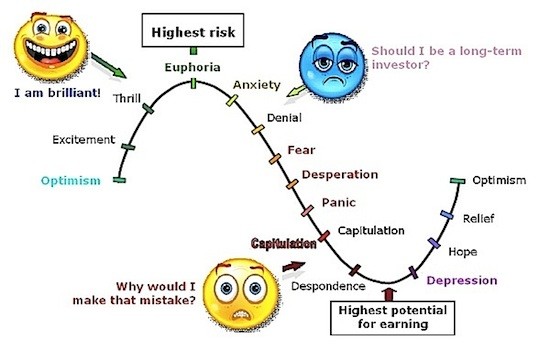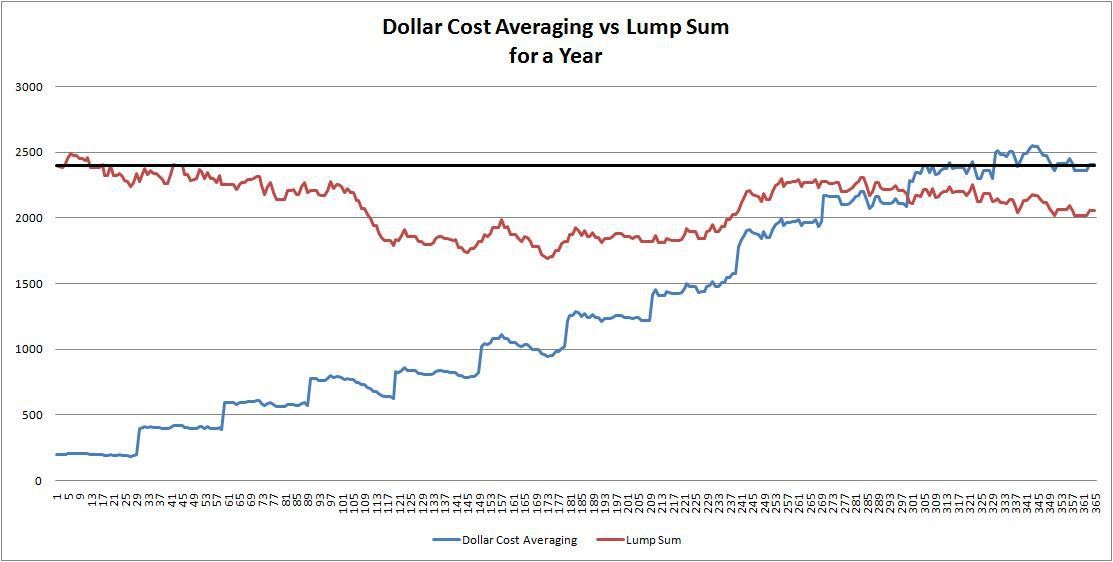DollarCost Averaging With ETFs Part 2
Post on: 29 Апрель, 2015 No Comment

In yesterday’s post. I introduced a reader’s idea for overcoming the main drawback of exchange-traded funds. Donald plans to contribute $2,000 a month to his RRSP (currently $65,000), and to minimize the trading commissions associated with ETFs, he’s created a “mirror portfolio” with index funds. This will allow him to set up pre-authorized payment plans and take advantage of dollar-cost averaging. Donald plans to move the money from the mutual funds into the lower-fee ETFs once a year.
By contributing to these funds every month, Donald can “average into the market” 12 times and doesn’t have to worry that his one annual ETF purchase might come at a bad time. When he does buy new ETF shares, he can also use the opportunity to rebalance his portfolio back to its target allocation and reinvest any cash dividends that were paid into the account by the ETFs.
So, does the strategy make sense?
Readers who commented on yesterday’s post pointed out several factors to think about before following Donald’s strategy:
The MER savings will be very small. While ETF management fees are lower than those of index funds, the differences are not necessarily large. The gap between the TD Canadian Index Fund e (0.31%) and iShares XIU (0.18%) is trivial in a small portfolio: $13 on every $10,000 invested. Overall, the weighted MER of Donald’s ETF portfolio is 0.19%, while the index funds would cost 0.49% (0.38% if we get rid of the CIBC fund). While 30 basis points is significant in a large portfolio, it works out to only $195 in a $65,000 account.
Even then it might be worth it, but If Donald rebalances once a year, he’ll spend $145 on trades ($29 × 5 ETFs), plus he’ll incur currency conversion fees on the Vanguard ETFs. That virtually wipes out any cost advantage of the strategy. He would likely be better off simply holding the whole portfolio in e-Series funds. (He should probably keep the Vanguard ETF for his emerging markets exposure.)
It may be unnecessarily complicated. Even in a large portfolio, where you could make a better case for using Donald’s hybrid strategy, there’s value in keeping things simple. Uncluttered portfolios are easier to monitor and maintain. Keeping track of the asset allocation and rebalancing with 10 funds rather than five will require some skill with a spreadsheet. As one commenter wrote: Maybe we’re trying to pile too much stuff on that proverbial couch.
Early redemption fees may be a danger. Money put into the TD e-Series funds normally must remain there for 90 days or a 2% early redemption fee applies. In addition, a brokerage may automatically cancel a preauthorized contribution any time you liquidate a fund. Before implementing this strategy (whether its with the e-Series or other index funds) call your brokerage and ask about their policies so you dont get whacked with a fee.

There are alternatives. Claymore ETFs give investors access to a unique pre-authorized cash contribution (PACC) plan, which allows you to add shares each month with no commissions. However, if you’re considering this plan just so you can do dollar-cost averaging with ETFs, that’s getting things backward. Claymore’s ETFs are not only more expensive than the iShares and Vanguard products Donald uses — and more expensive than the e-Series funds, for that matter — they also have embedded strategies that investors may not want to follow, such as fundamental indexing. (The PACC plan is also not supported by several brokerages.) If you’re using Claymore ETFs because you prefer their strategies, then the PACC is nice feature. But it shouldn’t drive your decision about which ETFs to use.
If you’re an ETF investor, what strategy do you use for keeping costs low when making monthly contributions? Share it with your fellow readers by posting a comment below. I’ll reward the most helpful commenter with a copy of Moshe Milevsky and Alexandra Macqueen’s new book, Pensionize Your Nest Egg .
Subscribe
Subscribe to our e-mail newsletter to receive updates.














